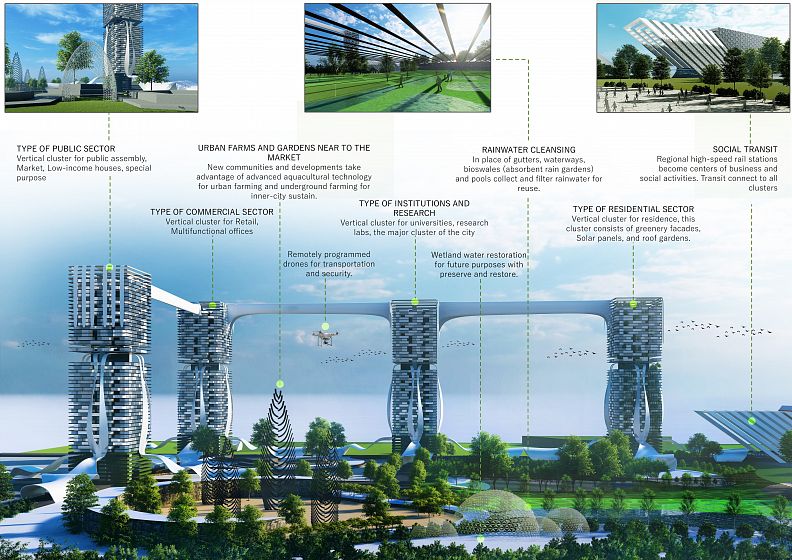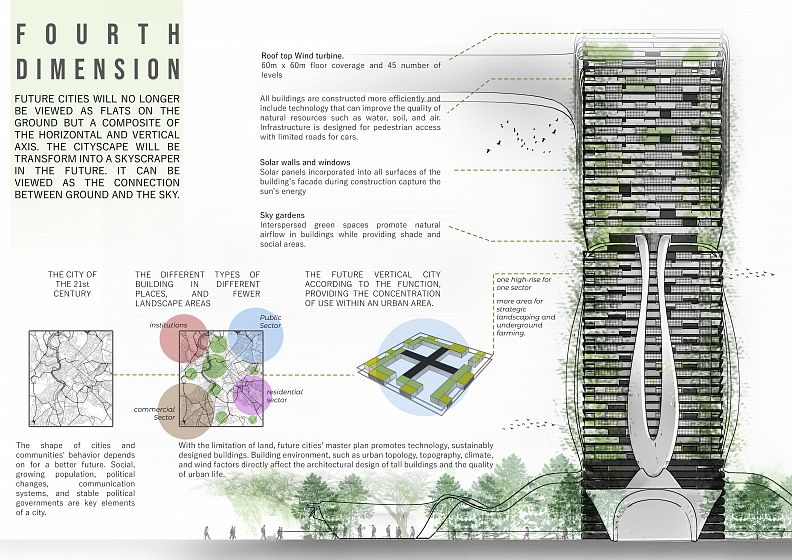Sustainable City in Future

Project idea
Future cities will no longer be viewed as flats on the ground but a composite of the horizontal and vertical axis. The cityscape will be transformed into a skyscraper in the future. It can be viewed as the connection between the ground and the sky.
Project description
The master plan promotes technology, sustainability, and internationally designed buildings. Building environment, such as urban topology, topography, climate, wind, and seismic factors directly affect the architectural design of tall buildings and the quality of urban life. External environment affects the overall design, Tall buildings serve specific functions in meeting urban needs. These functions can be categorized as commercial, residential, industrial, institutional, public assembly, special purpose, and multi-use. Usually, tall buildings are clustered according to the function, providing the concentration of use within an urban area. Multi-use tall buildings where typically commercial and residential uses are mixed can also have an impact on the historical heritage of buildings and spaces.
cities are growing in density. they will have to grow vertically, as their horizontal expansion becomes constrained by limitations imposed by the optimum horizontal scale for the functionality of cities. Even farming and other agricultural production activities will probably grow vertically through “vertical farms.”. Future cities will no longer be viewed as flat on the ground but a composite of horizontal and vertical architecture. The cityscape will transform into a skyscape.
Technical information
In a prosperous world with the positive impetus of globalization, some of these cities will flourish and build upward resulting in 3D skyscraper cities. In general, both in economically prosperous developing countries and industrialized countries, layered 3D cities with tall buildings connected by bridges in the sky will continue to emerge. Layered 3D cities are the likely imagery of the future and architects and urban designers will continue to perfect artifacts in a city in progressive phases of transition, experimentation, and continued search. It can be viewed as architecture in which connections are made both at the ground level and in the sky. It represents layered and connected urbanism embodying mixed-use zoning. Regional high-speed rail stations become centers of business and social activities. Transit connects to all clusters and it represents connectivity.





